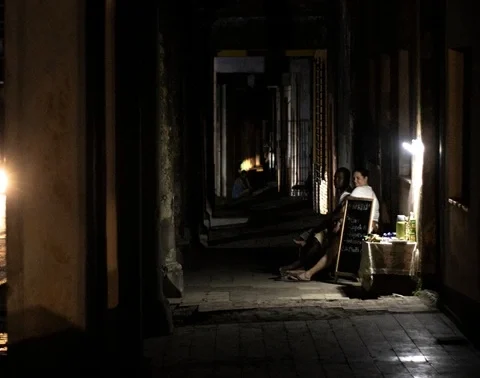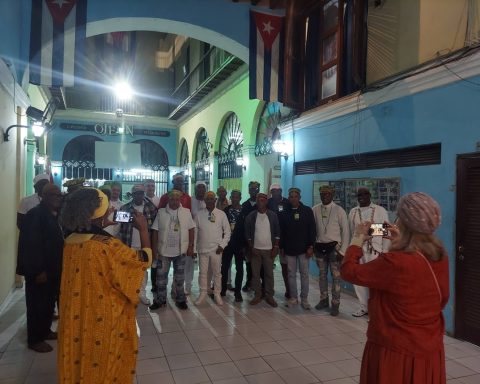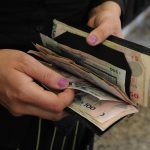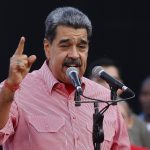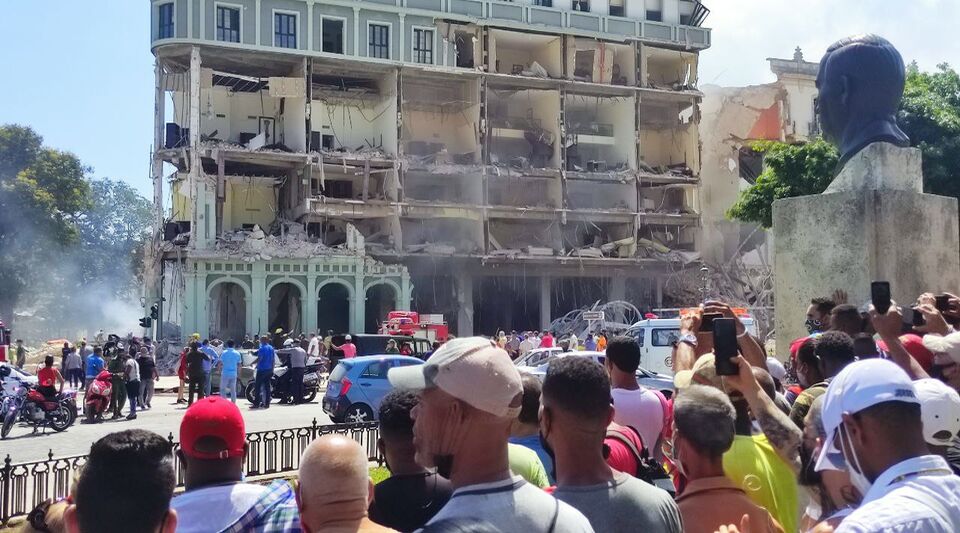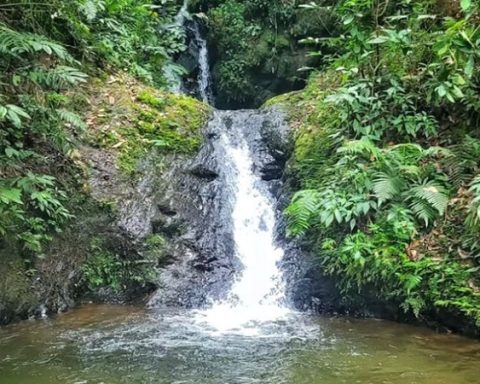Havana is the guest city of the Buenos Aires International Book Fair, one of the largest cultural events in Argentina, which is now celebrating its seventh day. At the entrance of the building that houses the Blue Pavilion, whose size is one of the largest among the four that make up the La Rural property, its headquarters, a large poster reminds you: “Visit the Havana stand in the Yellow Pavilion. Real and wonderful city of letters”.
The space has been arranged in the yellow pavilion, as always happens with the invited cities, which have been eight, counting Havana, since this tradition began with Amsterdam in 2013. It is an open area where red colors predominate , yellow and green. References to architecture and a Cuban flag can be seen.
Among the books arranged on two tables on the first day, titles on Fidel Castro and Che Guevara predominated, some editions of Casa de las Américas and the Pablo de la Torriente Brau Center. There were also music records recorded by Egrem. I asked if they had perhaps brought the Alejo Carpentier awards, which is one of the highlights each year in relation to novels, short stories and essays, and they told me no.
But two days later I found more than ten copies of the the year it snows, the book by the Holguin writer Rubén Rodríguez, deserving of said Prize in 2019. I also saw other authors in the collection: Pedro de Jesús, Alberto Marrero and, along with their books, a collection of poems by Aida Bahr. “Boy, there are still a lot of unopened boxes,” one of the sales people told me.
From the first to the fifth day the tables increased. All the literature with which the Chamber of the Book was loaded is held on them. Titles by well-known authors among the Argentine public stand out, as is the case of Guillen and Carpentier. There is also some children’s literature, photography books, among which there was one by an old friend, Gabriel Dávalos, some essays and some jewels mixed up in the exhibition, such as the classic by Miguel Ángel Sánchez: Capablanca, Legend and reality. I stopped to leaf through an edition of The Cuban in poetryby Cintio Vitier.
Despite this list, the most well-known voices abroad today are not to be found, both in poetry and in prose written on the Island. Right here they enjoy good readers, for example, Pedro Juan Gutiérrez, Leonardo Padura, Reina María Rodríguez .
Sometimes Cuban music is heard from the stand, which can be recorded or live. They say that troubadours like Eduardo Sosa or Raúl Torres have already passed through here. Also the writers Arístides Vega Chapú, Francisco López Sacha and Yamil Díaz; some of those who make up the official delegation, of which I have also been able to make out Abel Prieto, president of Casa de las Américas, who on Monday night almost spoke to a few present in the space set up for presentations at the stand about his novel cat’s flight.
“There is no delegation more secret than the Cuban one,” Cuban writer Marcial Gala, based in Buenos Aires, commented with irony during an interview in another space curiously anchored in the Fair to house publishers, books and authors unmarked by the government of the Island. It is located at the other end, in the Blue Pavilion, in a small corner, but attractive to the eye. Some call it “the other Cuba”.
Until this place, sponsored by the NGO Federalismo y Libertad, and according to the criteria of the person I have seen as host, the violinist Luis Alberto Mariño, certain Argentines have come to question him, alleging that he represents interests of the United States. But, these have been the exceptions. On the set, Cuban writers based in Buenos Aires are interviewed, conversing in a cordial tone while the exhibition of books by authors such as Reinaldo Arenas, Rafael Almanza, Hilda Molina, Ángel Pérez, Armando Añel, Roberto Quiñones, Ana Rosa Díaz is appreciated. Naranjo or Rafael Vilches, all under the title: “Homeland and Life. Exhibition of Cuban culture”. This is the space that brings together publishers such as NeoClub Ediciones, Hypermedia, Puente a la vista, Rialta, Editores Argentinos, Iliada Ediciones.
The polarization with the Cuban issue is evident, although luckily and from what I have seen it coexists without problems these days in Buenos Aires. Already at the opening of the Fair it had been confirmed that Cuba is the sign of contradictions. Four of the five speeches made made reference to Havana in one way or another. The first, from Ariel Granica, president of the Fundación El Libro, organizer of the event, referring to the invited city, said that its program of activities was “impressive”. Something similar commented the nation’s Minister of Culture, Tristán Bauer, who evoked “the great” José Martí, always an example of confluences: “a figure that unites our peoples through preaching for human betterment.”
Shortly after the writer Guillermo Saccomano added another reference during his incendiary speech, when he exemplified with a list of essential authors in his training; then, he mentioned the name of two Cubans. He stressed that they represent the “best literature” of the Island and mentioned Guillermo Cabrera Infante and Reinaldo Arenas. For both he asked for applause.
On behalf of the Cuban government, Tatiana Viera Hernández took the floor, presented as coordinator of Objectives and Programs of the Provincial Government of the Municipality of Havana.
“Those who are today at the stand in Havana, guest of honor, and those who will receive it in the different presentation rooms and events of the Fair, within this venue and in other venues in Buenos Aires, traveled in spite of everything, with the limited resources provided by the people of Cuba and the solidarity of the world,” he said, and continued to emphasize: “they are the legitimate representatives, they are not financed by any foreign government, nor do they use their undoubted creative freedom to request the destruction of their homeland and that of their families, unique and unrepeatable Cuba and Havana are reflected in them, everything else that is said is offense, hatred, mercenarism and apostasy”.
The reference seems to have been directed to the aforementioned stand, but this dilemma began three years ago, when it was announced that the Fair would have as its guest of honor that Havana that continues to be so referenced in literature. Some even wondered, even in newspapers like ClarionIf anything, the stand that arrived from the Island would also include authors not cataloged by the government for essentially political reasons.
Now we see that it is not, however books by Cuban authors can be found in different spaces of the Fair thanks to publishers such as Corregidor (Martí, Casal, Ponte, Piñera, Gala- very soon Amel Hechavarría), Colihue (Lezama Lima, Fina García Marruz) , Grijalbo (Daína Chaviano), Tusquets (Padura, Arenas, Novás Calvo), Galaxia Gutemberg (Cabrera Infante), Jus (Rubén Gallo), Cátedra Editions (Lezama Lima), Argentine National Library (Dora Alonso), Economic Culture Fund ( Rafael Rojas, Pablo Armando Fernández), Ayacucho (Retamar, Eliseo Diego)… and there are many more.
Even if what you prefer is a political theme, materials related to the revolution and its impact, the revolution and a critical view of it, the revolution and its relationship with the United States, a large number of shelves house all kinds of of literature with chronicles, essays or analysis of its figures ranging from Che Guevara and Camilo Cienfuegos to Fidel and Raúl Castro. “Don’t mess with Cuba,” an Argentine friend told me yesterday, smiling, when we entered to argue about reality.
Cuba is like that, and it goes everywhere in these days of the Fair. Even in one of the strangest spaces that one sees, they can be found marked on a map. It marks the 22-year journey of a couple who became a family of six (the Zapps). They were in 102 countries aboard a 1928 Graham-Paige. They wrote a book to defray the expenses, and now those chronicles can be found at the Fair. They arrived in Cuba without a car, they went to take clothes donated to a family.
The Island is also on the route of one of the most widely read Argentine writers today, Mariana Enríquez. Suddenly I saw myself with a book of his (someone walks on your grave) in the hands. She recounts some of her travels through cities around the world where she has stumbled upon cemeteries that seduced her. On the cover she identified the Colón. And when I search for the corresponding chronicle, in addition to discovering that he traveled at the beginning of this century following the rock band Manic Street Preachers, I find an illuminating phrase: “in Havana it is taken for granted that everything extremely strange that happens is normal”. The same with the Cuban issue, wherever it is addressed: surprise is normal.


